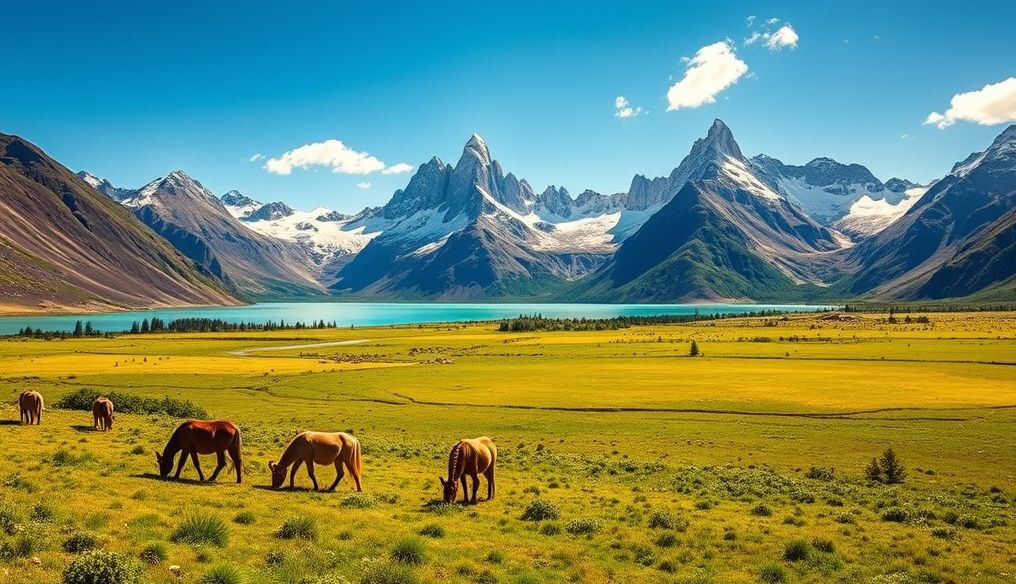What are the Most Beautiful Natural Reserves to Visit Around the World?
Natural reserves are safe havens for wildlife and areas of exceptional natural beauty. From dense rainforests to vast deserts, these reserves offer unforgettable experiences for nature lovers and adventurers. In this article, we will explore some of the most beautiful natural reserves around the world, focusing on what makes each one unique and why it's worth visiting.
1. Serengeti National Park, Tanzania
Serengeti National Park in Tanzania is one of the most famous and largest natural reserves in the world. It is renowned for its annual Great Migration, where millions of animals, including zebras, wildebeest, and gazelles, migrate across the plains in search of green pastures.
Key Features of the Serengeti:
- The Great Migration: An unforgettable sight of millions of animals crossing the plains.
- Biodiversity: Home to a wide range of predators, including lions, leopards, and hyenas.
- Safari Tours: Excellent opportunities for close-up wildlife viewing.
Interesting Statistics: The park covers an area of 14,763 square kilometers and is home to over 500 species of birds.
2. Yellowstone National Park, USA
Yellowstone National Park, located in the states of Wyoming, Montana, and Idaho, is the first national park in the world. It is famous for its geothermal features, including geysers, hot springs, and mud volcanoes.
Key Features of Yellowstone:
- Geysers: Such as the "Old Faithful" geyser, which erupts regularly.
- Hot Springs: With vibrant colors due to thermophilic bacteria.
- Wildlife: Home to grizzly bears, wolves, bison, and elk.
Visitor Tip: Plan your visit during the off-peak season to avoid large crowds.
3. Amazon Rainforest, South America
The Amazon Rainforest is the largest rainforest in the world, spanning nine countries in South America. It is famous for its immense biodiversity, home to millions of species of plants, animals, and insects.
Key Features of the Amazon Rainforest:
- Biodiversity: Home to more than half of the world's known living species.
- Amazon River: The longest river in the world and the second largest in terms of water volume.
- Indigenous People: Home to many indigenous tribes living a traditional lifestyle.
Important Fact: The Amazon Rainforest plays a crucial role in regulating the global climate and producing oxygen.
4. Great Barrier Reef, Australia
The Great Barrier Reef is the largest coral reef system in the world, stretching along the coast of Queensland, Australia. It is famous for its immense marine biodiversity, home to thousands of species of fish, coral, and invertebrates.
Key Features of the Great Barrier Reef:
- Coral Reefs: With vibrant colors and diverse shapes.
- Marine Life: Home to sharks, sea turtles, dolphins, and whales.
- Diving and Snorkeling: Excellent opportunities to explore marine life up close.
Warning: The Great Barrier Reef faces serious threats due to climate change and water pollution.
5. Banff National Park, Canada
Banff National Park is located in the Canadian Rocky Mountains and is famous for its stunning natural landscapes, including turquoise lakes, towering mountains, and glaciers.
Key Features of Banff National Park:
- Lake Louise: With clear turquoise waters surrounded by glacial mountains.
- Hot Springs: Opportunities to relax and enjoy the warm waters.
- Hiking: Diverse trails suitable for all levels.
Traveler's Tip: Visit the park in the summer to enjoy the warm weather and outdoor activities.
6. Ngorongoro Conservation Area, Tanzania
The Ngorongoro Conservation Area is a unique protected area in Tanzania, featuring a massive volcanic crater that is home to a diverse range of wildlife.
Key Features of Ngorongoro:
- Volcanic Crater: A unique ecosystem with a diverse range of wildlife.
- Birds: Home to many species of birds, including pink flamingos.
- Safari Tours: Excellent opportunities for close-up wildlife viewing.
Additional Information: Ngorongoro is a UNESCO World Heritage Site.
7. Kakum National Park, Ghana
Kakum National Park is located in Ghana and is famous for its suspended canopy walkway that allows visitors to explore the rainforest from above.
Key Features of Kakum National Park:
- Canopy Walkway: A unique experience to explore the rainforest.
- Biodiversity: Home to many species of birds, mammals, and insects.
- Hiking: Diverse trails suitable for all levels.
Visitor Tip: Wear comfortable clothing and appropriate walking shoes.
8. Komodo National Park, Indonesia
Komodo National Park in Indonesia includes five major islands and is famous for Komodo dragons, the largest lizards in the world.
Key Features of Komodo National Park:
- Komodo Dragons: Huge predators considered one of the wonders of nature.
- Coral Reefs: With vibrant colors and diverse shapes.
- Diving and Snorkeling: Excellent opportunities to explore marine life.
Warning: Extreme caution should be taken when approaching Komodo dragons as they are dangerous animals.
9. Torres del Paine National Park, Chile
Torres del Paine National Park is located in Chilean Patagonia and is famous for its stunning natural landscapes, including towering mountains, turquoise lakes, and glaciers.
Key Features of Torres del Paine National Park:
- Torres del Paine Mountains: Towering granite peaks considered one of the most famous natural landmarks in the world.
- Hiking: Diverse trails suitable for all levels, including the famous "W" trek.
- Wildlife: Home to guanacos, pumas, and birds of prey.
Traveler's Tip: Plan your visit in the summer (December to February) to enjoy the warm weather.
10. Kruger National Park, South Africa
Kruger National Park is one of the largest natural reserves in Africa and is famous for its immense biodiversity, home to a wide range of wildlife, including lions, elephants, leopards, giraffes, and zebras.
Key Features of Kruger National Park:
- The Big Five: Home to lions, elephants, leopards, buffalo, and rhinoceros.
- Safari Tours: Excellent opportunities for close-up wildlife viewing.
- Accommodation: Diverse accommodation options, including campsites and luxury hotels.
Important Fact: The park covers an area of 19,485 square kilometers.
In conclusion, natural reserves around the world offer unparalleled opportunities to explore the beauty of nature and unique biodiversity. Whether you are looking for an adventure in the rainforest, a safari in the African plains, or exploring colorful coral reefs, these reserves will leave you with unforgettable memories.




